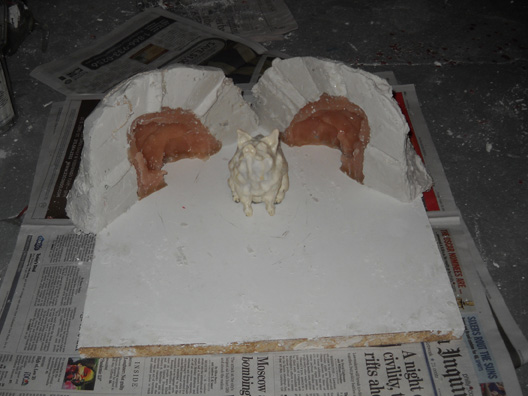Bronze Casting - Step 8
Making the Mold:
The Final Mold Success!!!!!!!

If all goes well - and at times, it does not - you will be able to separate the two halves of the mother mold and remove the inner rubber mold. You will then have to clean off the surfaces of both the plaster and the rubber, but then you can replace the inner mold snugly into the mother mold. At this point you can see where we have been heading. We have a nice mold where you can make multiple casts.
Since this is lost wax bronze casting we will be making a wax model, but this mold can be used to make casts from other materials as well. In fact making a plaster model was the classical method for future reference and generations and many plaster casts of famous sculptors - inclulding Rodin's - still survive.
Of course, technology always moves forward and nowadays casts of plastic resins are common, as are direct "cold" castings. Cold castings are casts from the rubber molds using powders of traditional sculpture material - bronze, aluminum, stone, wood - that are mixed with a resin and cast as a final work. The appearance is reasonably close to that of metal, stone, or wood. Cold cast sculptures are now considered acceptable media for fine art, and the advantage is more than once copy can be made from one mold, the molds are reusable, and statues can be worked on to add more detail later. Last but not least, the cost considerably less than of the traditional bronze, aluminum, stone, or wood sculpture. A disadvantage is some loss of durability. And of course, a bronze cold cast is isn't real bronze casting - not for the purists.